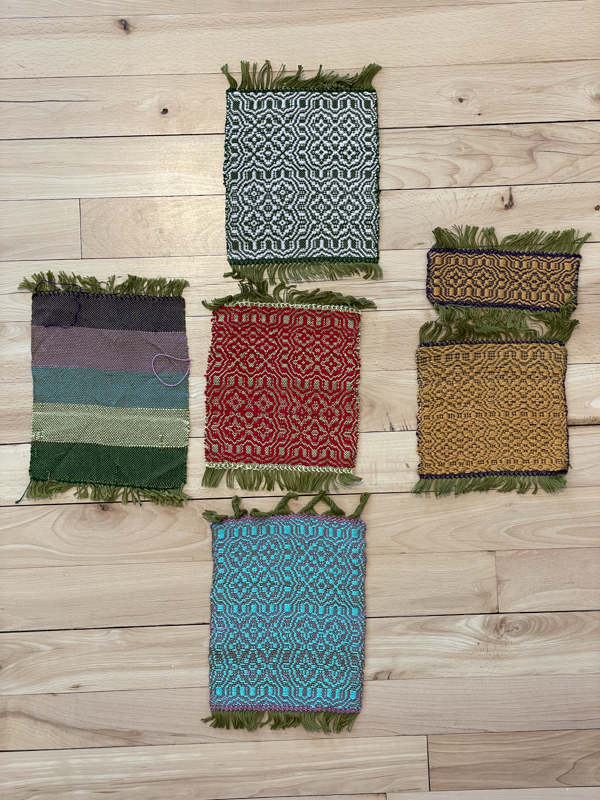
Discover Color Weave Along (2020)
Pattern: A 4 shaft overshot pattern set by the class instructors (Knots & Crosses)
Yarns:
Warp: 132 ends, measured at ~5yds; Lunatic Fringe 10/2 mercerized cotton in “Kelp” colour
Tabby weft:
⁃ A variety of 10/2 mercerized cotton (Lunatic Fringe and others);
Pattern weft:
⁃ A variety of 5/2 mercerized cotton I had in stash
Sett: 20epi
Method: Weaving — multishaft table loom.
Completed: December 31, 2020. (Approximately. I pulled the warp off the loom in early January, but we’ll call this a 2020 project).
This is the product of participating in the “Discover Color Weave Along” led by Tien Chiu and Janet Dawson, in late 2020. Several thousand of us signed up for a multiweek online class and learned about the use of colour in weaving (Tien’s specialty) and some pointers on weaving overshot (Janet’s). It was fun, inspiring, and yielded lots of learning. I am never going to be stuck with “one colour plus a neutral” for my colour planning again! The finished product was “mug rugs” — about 6″x6″ plus fringe, each.
The weaving experience: I had a lot of trouble with my loom. My floor loom was still occupied with a project when we started the weave along, so I opted to use my 8 shaft Northwest Pioneer table loom for the weave along. It’s fast and easy to warp up, and with 8 shafts, completely able to handle the pattern. Except, the 20 ends per inch sett was perhaps too close to its limit. I could not get a clean shed for love or money. In the end, I followed someone’s very helpful suggestion to use a 2″ ruler as a guide to find the proper path and prop it open for the shuttle — for every single pick. Painful. And, still, the beating was inconsistent and basically failed when I got to the 3/1 Twill sample. In the end, I did the first week’s exercise, started the second one (3/1 twill) and gave up. But, there is a happy ending! I moved the warp to my floor loom to do the next class (Janet Dawson’s “Unravelling Overshot”), and I continued the colour assignments from the weave along as I did the overshot weaving assignments for the class. And, the weaving was not only much easier, it also produced better (more even) results. I’m now re-evaluating my thoughts on the table loom.
The learnings: Wow. This was fun! Bear in mind that the olive green warp is common to every single thing woven. The tabby (i.e., the weft that is the same thickness as the warp and makes the plainweave part of the weaving) weft colours blend with the warp, and the pattern weft (double the thickness) doesn’t, so much. You want contrast (hue and value) between the pattern weft and the blended tabby weft/warp. In the pictures below, I have included shots of the weaving in progress, so you can see the actual colours of the tabby and pattern wefts and see what happens to them when used.

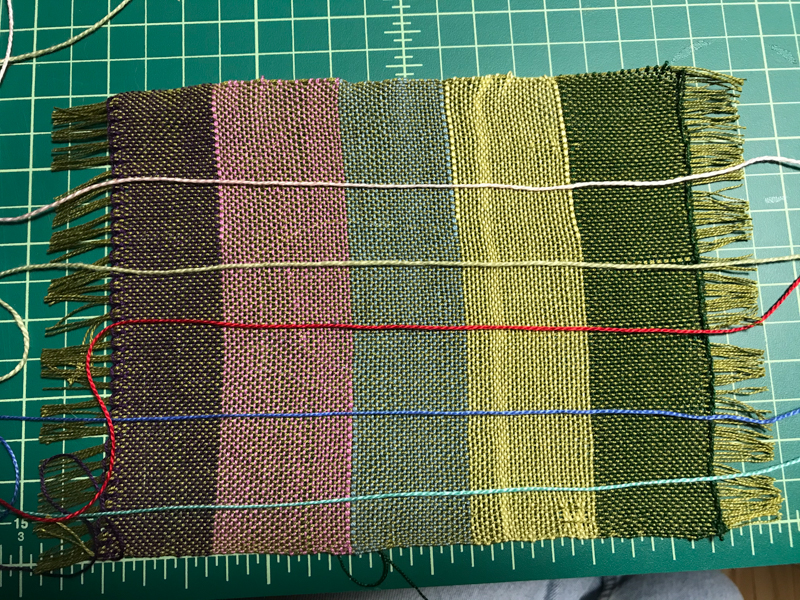
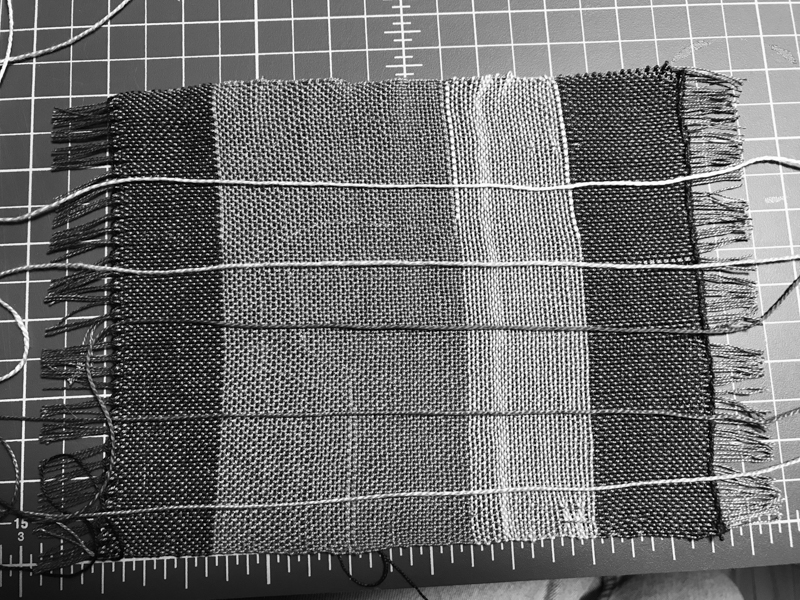
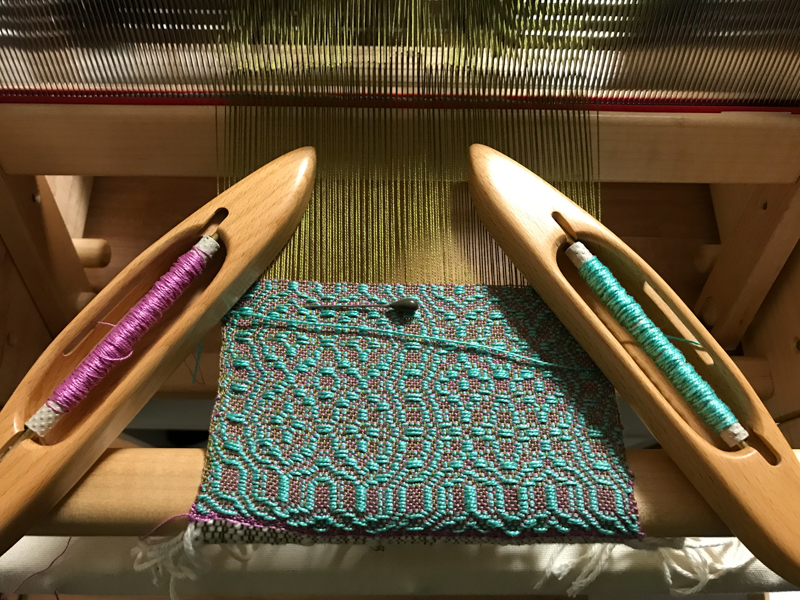
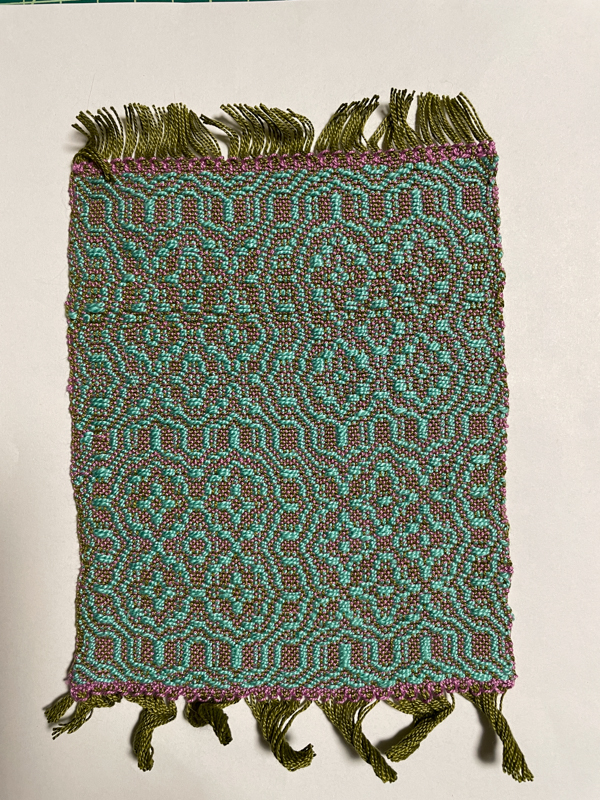
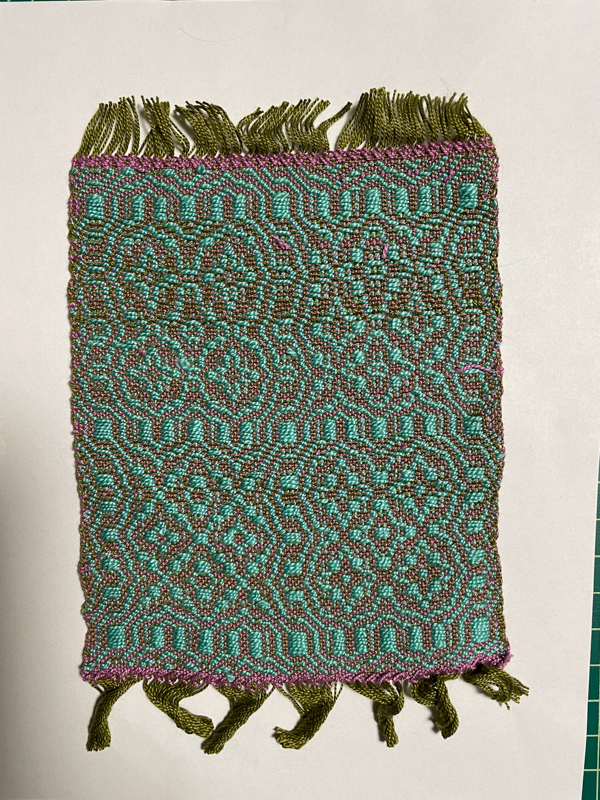
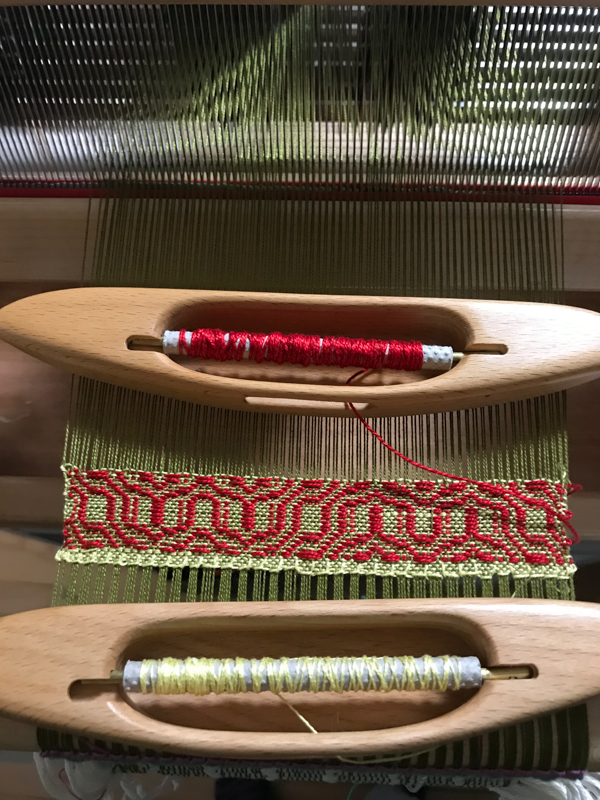
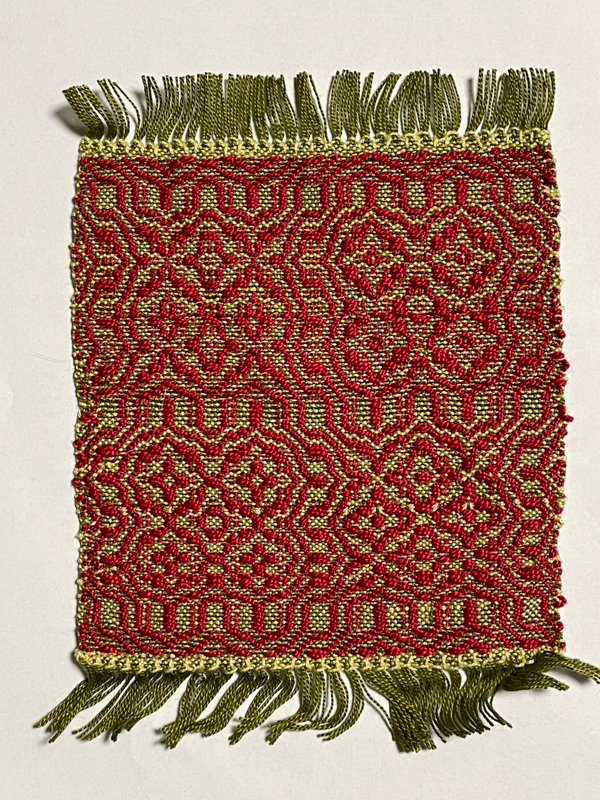
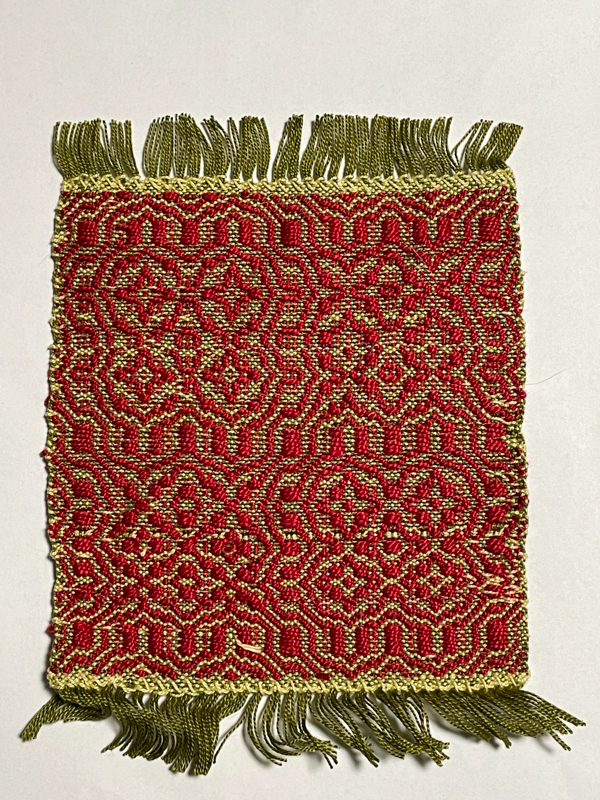

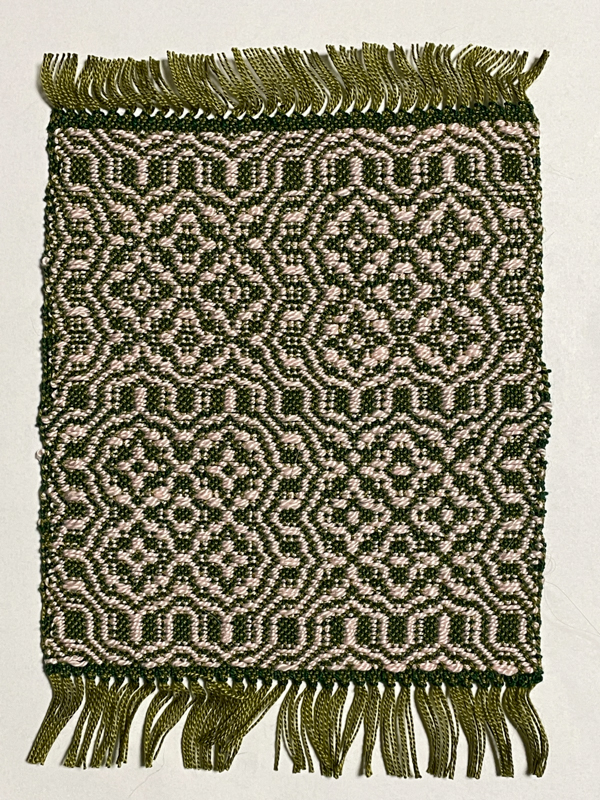
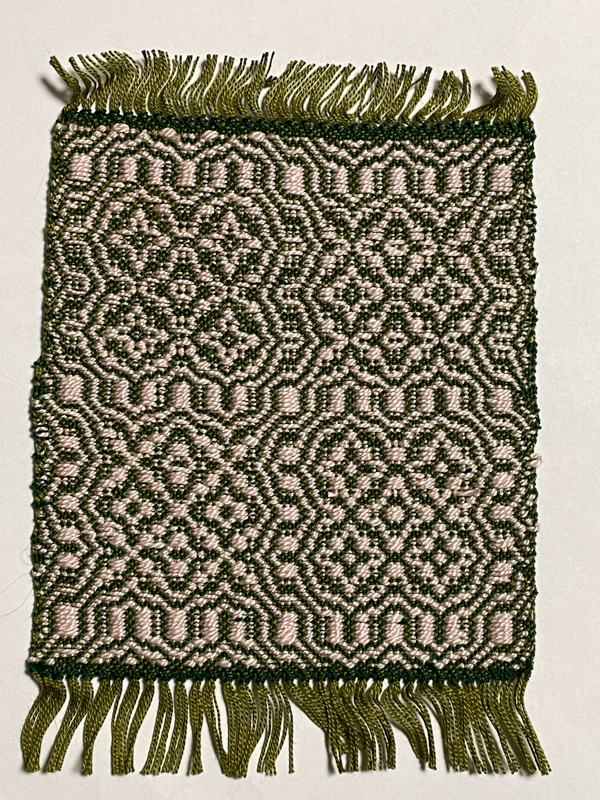
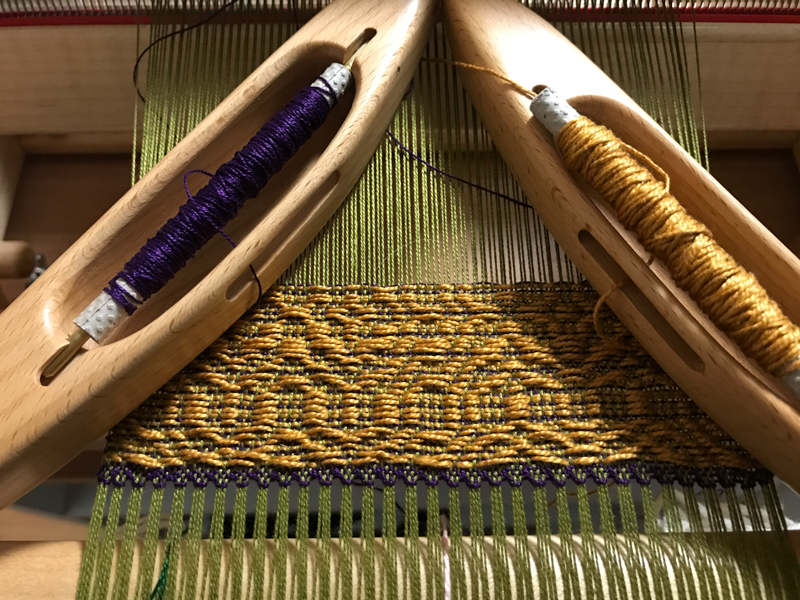
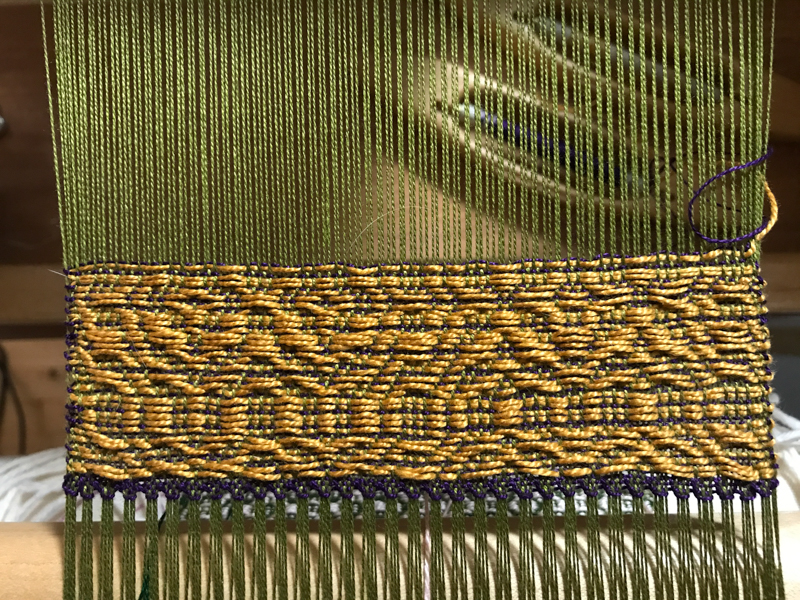
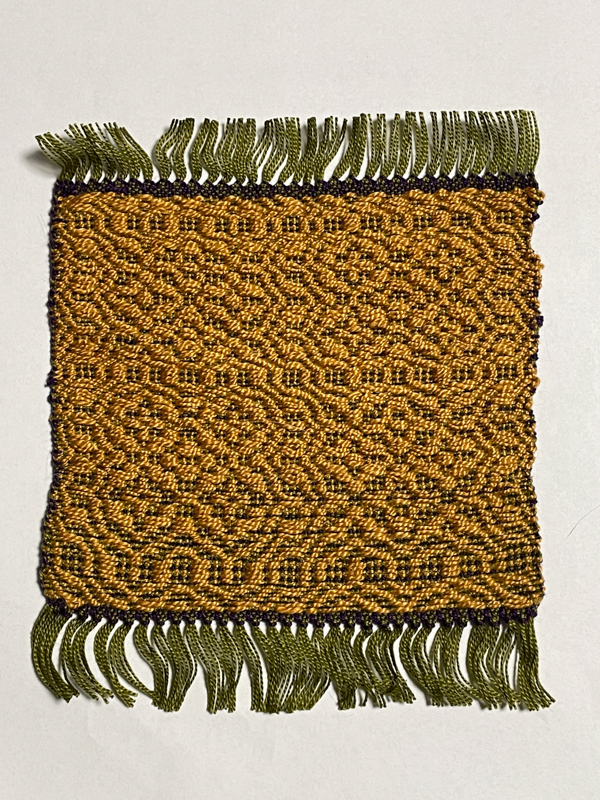
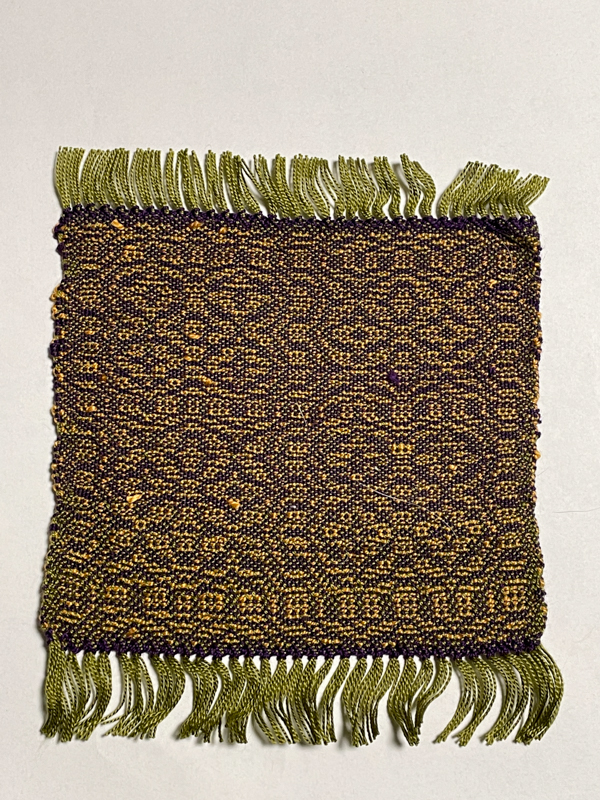
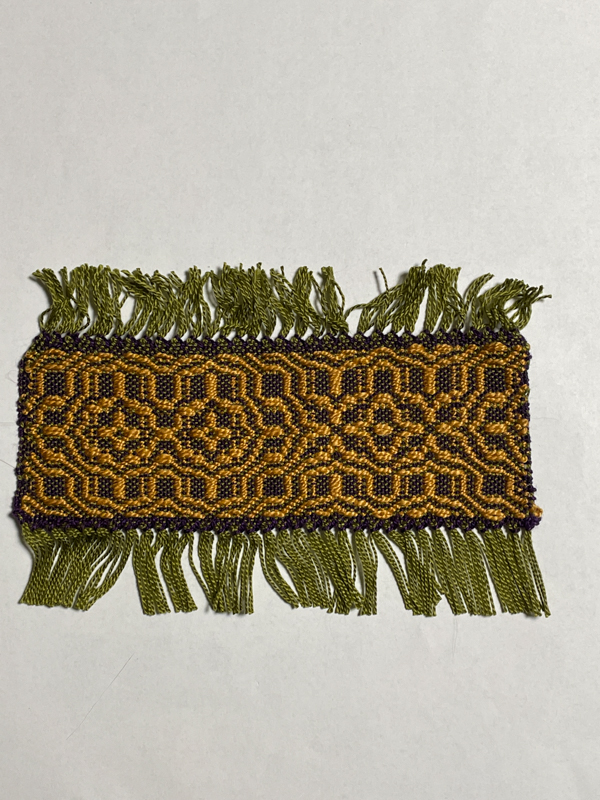
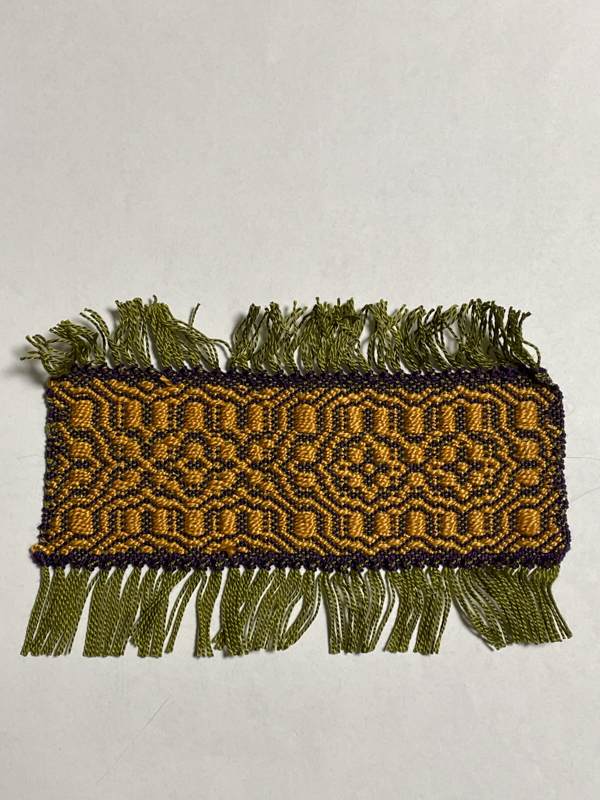
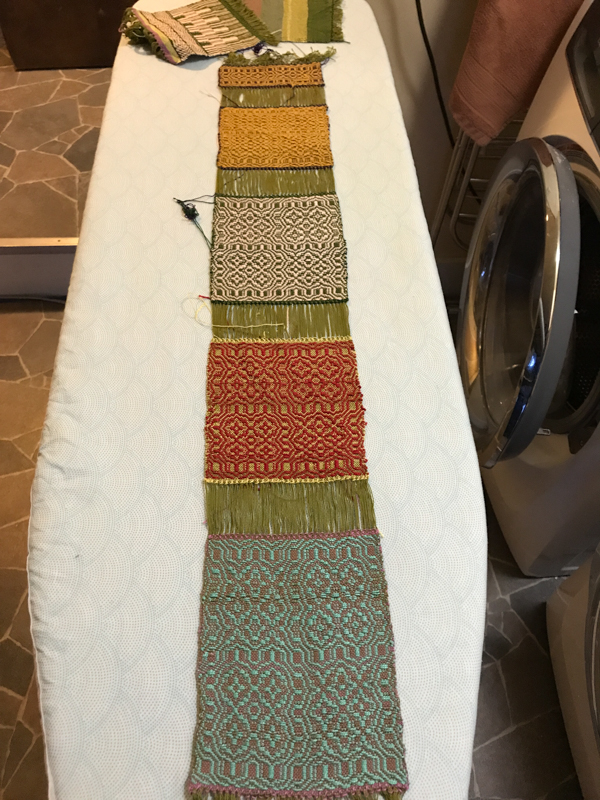
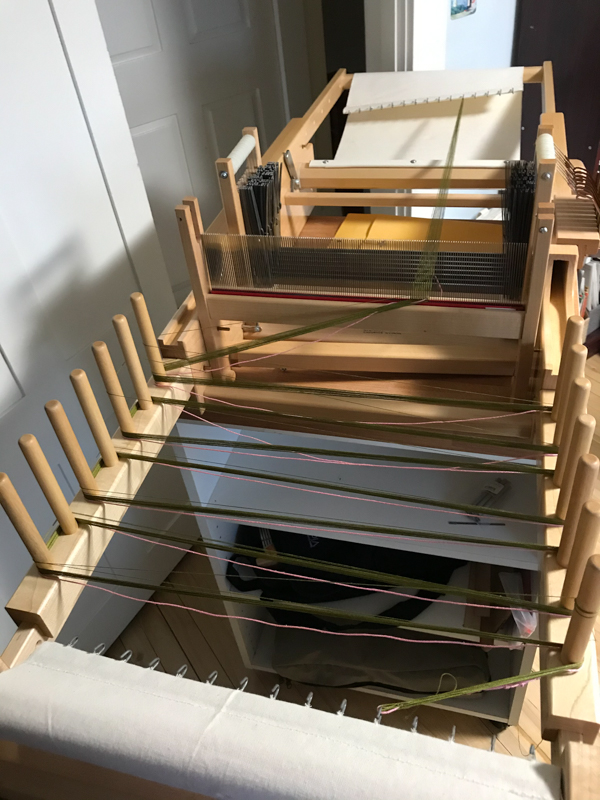
Recent Comments